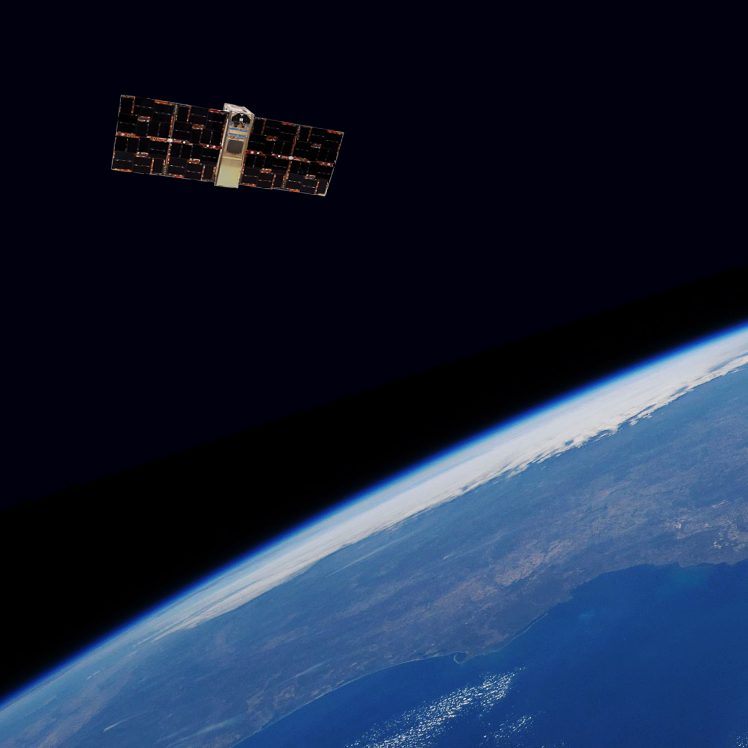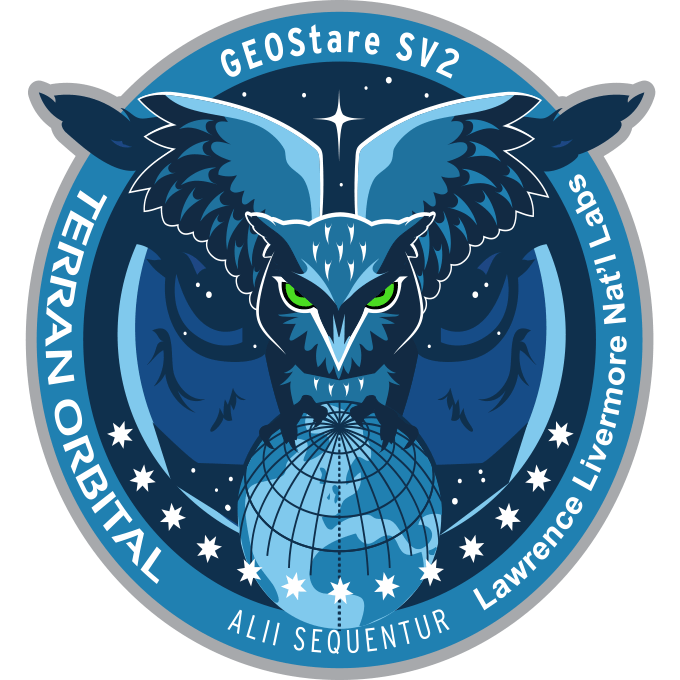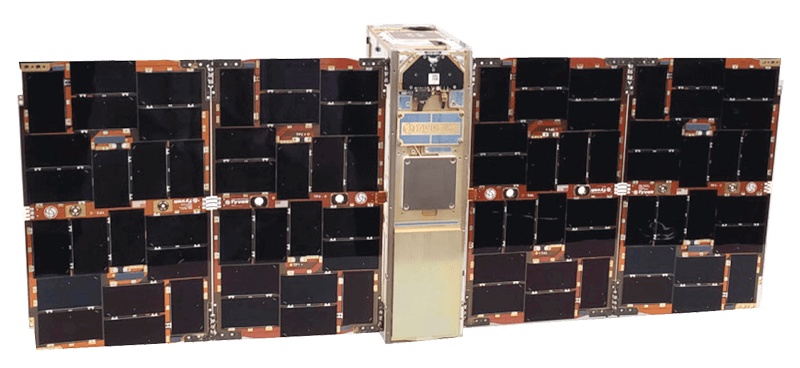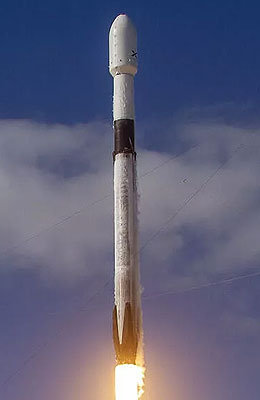

What’s smaller than a breadbox, orbits hundreds of kilometers above Earth’s surface, and can take photographs that show cars on the road one minute, then provide images of galaxies millions of light-years away the next? The monolithic telescope, or MonoTele—a space telescope developed at Lawrence Livermore National Laboratory—can, with more images on the way. In 2021, a small satellite bearing an imaging payload featuring two MonoTeles hitched a rideshare on a SpaceX Starlink launch at NASA’s Kennedy Space Center in Florida.
The MonoTele is fabricated from a single, monolithic fused silica slab, optically shaped and with reflective coatings at both ends. One MonoTele has a high-resolution narrow field of view for Earth observation, the other has a high-sensitivity medium field of view for space domain awareness and astronomy applications. The compact optical imaging payload, called GEOStare2, is incorporated into a satellite about the size of a large shoebox, designed and developed by Terran Orbital Corporation.
The GEOStare SV2 consists of the GEOStare2 optical imaging payload. The payload holds two compact Livermore-developed monolithic telescopes, along with sensors, cameras, and electronics. The nearly 36-centimeter-tall, 120-centimeter-long GEOStare SV2 is the latest development of a collaboration between Lawrence Livermore and Terran Orbital to demonstrate the feasibility of using these small systems for space domain awareness (monitoring and tracking space debris), astronomical observation, and ground imaging.
GEOStare SV2 is the most recent achievement of a four-year, $6 million Cooperative Research and Development Agreement (CRADA) between Lawrence Livermore and Terran Orbital. The collaboration seeks to develop compact, robust, high-performance telescopes for nanosatellites, transitioning the Laboratory’s MonoTele technology to space demonstration and eventual commercial use for applications such as space domain awareness and intelligence surveillance and reconnaissance applications. Alex Pertica, deputy program leader for the Laboratory’s Space Science and Security Program is principal investigator for the CRADA. The effort is headed by Livermore astrophysicist Wim de Vries, who leads a multidisciplinary team of engineers, physicists, and astrophysicists. In addition to designing the imaging payload and working closely with Terran Orbital to integrate the payload and nanosatellite, the Livermore team is responsible for analyzing the images captured in orbit. De Vries notes that in its first six months of operation, GEOStare2 has taken more than 29,000 images of Earth and space, with more pouring in every day. “The satellite and its imaging system never sleep,” he adds.

Nation
Application
Operator
Configuration
Launch Date
Launch Vehicle
Mission Length
Mission Completion

Falcon 9 is a rocket that can carry cargo and humans into Earth’s orbit, even reaching the International Space Station (ISS). It is produced by American aerospace company SpaceX. Technically, it is a partially reusable, medium lift launch vehicle.
The rocket has two stages. The first (booster) stage carries the second stage and payload to a certain altitude, after which the second stage lifts the payload to its ultimate destination. The rocket evolved through several versions. V1.0 flew from 2010–2013, V1.1 flew from 2013–2016, while V1.2 Full Thrust first launched in 2015, encompassing the Block 5 Full Thrust variant, flying since May 2018.
The booster is capable of landing vertically to facilitate reuse. This feat was first achieved on flight 20 in December 2015. Since then, SpaceX has successfully landed boosters over 100 times. Individual boosters have flown as many as thirteen flights. Both stages are powered by SpaceX Merlin engines, using cryogenic liquid oxygen and rocket-grade kerosene (RP-1) as propellants.
The heaviest payloads flown to geostationary transfer orbit (GTO) were Intelsat 35e carrying 6,761 kg (14,905 lb), and Telstar 19V with 7,075 kg (15,598 lb). The former was launched into an advantageous super-synchronous transfer orbit, while the latter achieved a lower-energy GTO achieving an apogee well below the geostationary altitude.